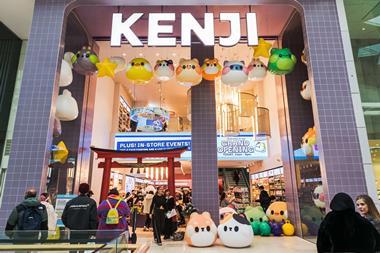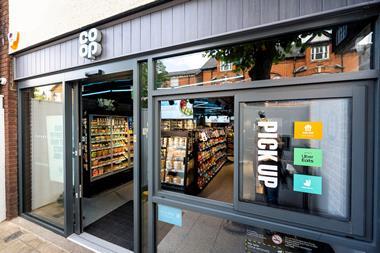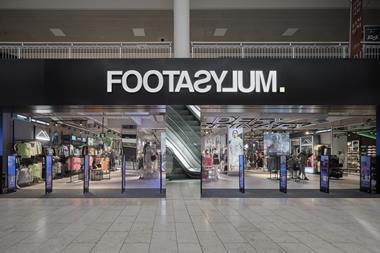Until relatively recently, it seemed a given when talking of retailing to say that the UK market is polarised between value operators and upmarket luxury merchants. Those unfortunate enough to find themselves between the two markets were said to be witnessing falling sales and deserting customers. For the mid-market, little appears to have altered and whether you look at Marks & Spencer, Debenhams, or any other high street name, difficult questions seem to be the norm.
What’s different now is that the credit crunch has been added to the mix and retailers at both ends of the value spectrum are feeling the effects of faltering consumer confidence. It is always positive, therefore, to come across a retailer that appears to be unaffected by the parlous state of the economy and is pulling in a tidy profit.
In this instance, the retailer has been around since 1860, has been owned by private equity firm Fox Paine for six years and is on the expansion trail. The company is Penhaligon’s – manufacturer [and retailer] of toilet requisites to the Dukes of Edinburgh and Cornwall – and it is riding the crest of a sales wave that has seen turnover soar 23 per cent, like for like, in the present year.
It has also just opened its 18th store, in Islington. Plans are in place to launch another 10, with three more scheduled to open this year. At 290 sq ft (30 sq m), the Islington store is not a massive branch – it is about half the size of the Covent Garden flagship that was refitted seven weeks ago. However, it is almost perfectly formed and is the outcome of an ongoing collaboration between Penhaligon’s general manager Sarah Rotherham and creative director Rosemary Rodriguez. Rodriguez is a freelancer and much of her time is spent as head of menswear for international designer Thierry Mugler.
“She’ll go mad on the creative side and I’ll make sure that there’s a commercial side to it all,” says Rotherham. She should know. Until last year, Rotherham was UK controller at the moneyed fashionistas’ store and brand of choice Molton Brown and is therefore well-placed to understand how to make luxury pay.
The Islington branch shows this in action. Located in a former gallery and well away from the more mainstream offers that populate nearby Upper Street, Penhaligon’s can capitalise on the affluent shoppers who come to this part of London in search of something different while inspecting the many antique dealers that fill the area. There is something of the Victorian about the retailer’s stores, but with a contemporary twist.
Rotherham says that when looking for a store, Penhaligon’s does not necessarily go for the most obvious locations. Since joining the company, she has closed the branch in St Ann’s Square, Manchester, principally because it was an exclusive location initially, but “then stores like Disney started to move in”, she says.
There’s nothing much wrong with Disney, but Rotherham says that it is unlikely to find favour with Penhaligon’s core shoppers. These, she says, are predominantly 40-plus, split equally between male and female, and think little of coming in and buying a half-litre of fragrance – not cheap when a small bottle comes in at about the£85 mark.
Sales at this level require an environment where customers will feel they can relax and where extended dwell times are the norm. It also means, as Rotherham puts it: “We don’t want to become part of the high street clone. We are about rolling out boutique shops.”
Antique features
In practice this means that each of the 18 stores in the chain are different from each other. There are, however, a number of defining characteristics and perhaps the most obvious of these is the outcome of Rotherham’s habit of touring auction rooms and flea markets in search of furniture that can be used as style pieces for the stores.
This is evident from the moment that you walk into the Islington store, where centre stage is given to a black suede chaise longue instead of a product display. The antique was picked up at a sale and reupholstered to go with the store’s interior. It looks luxurious and subtly fashionable, which is part of Rotherham’s strategy to attract younger customers into Penhaligon’s stores.
Behind the chaise longue is a small bespoke metal chest of drawers, constructed for this store by shopfitters Task. Rotherham says: “When they’d built the drawers, we said ‘take it outside’. The shopfitters warned us that it would get rusty and we said ‘perfect’.” There is indeed a well-worn look to this small display piece, which is topped with glass-stoppered scent bottles and tester swabs to help shoppers decide whether they want citrus notes or perhaps cinnamon in their fragrance.
Rotherham says that shoppers can have a “fragrance profile” constructed as part of the move towards keeping people in the shop – which is, presumably, where the chaise longue comes in. There is little in this store that doesn’t look as if it’s a one-off. Black lacquered display cases are set against the maroon-purple walls into which arched niches have been set. A variety of products are contained within these niches, from small boxes with highly polished surfaces to atomisers created from crystal with sterling silver tops. Antique-looking capitals – the kind more usually associated with the top of columns adorning grand buildings – have been used to add interest to the walls and each of them carries a small, desirable object on its top.
At the back of the store, the walls are covered in a deep red and black wallpaper with a design that carries the outline of shaving implements, such as brushes and cut-throat razors. The design for this has been created by delving into Penhaligon’s archive and reinterpreting some of the images in its catalogues.
A few steps beyond this point there is what would have been a narrow corridor, but has now been transformed as a further display area, incorporating a porcelain sink – harking back to the brand’s 19th-century origins as a gentleman’s barbers.
Rotherham is confident that these extra touches are worth every penny. The Covent Garden flagship, for example, has a wow piece at its centre: a chandelier created from upended glass fragrance bottles. She says she commissioned an artist who normally works with old cutlery to create lights and that it swallowed a fair proportion of the£110,000 refit cost, but “was worth it”.
“Things that were [also] expensive were real fires, but they are all part of keeping shoppers in the store longer,” she says. Plans are in place to add to the attractions of the King’s Road branch by incorporating a barbershop as part of the store next year.
This, then, is a success story. “I’m always worried when I say we’re not affected by the credit crunch in case we are. But we are still expanding,” says Rotherham. “We’re not a shopping centre brand, although we have looked at White City, but we are still quite exclusive.”
There is little doubt that this is the case and as Islington’s well-heeled begin their progress through the area’s narrow streets in the late morning, it looks as if Rotherham is right about it being an appropriate location for Penhaligon’s. On a square metre by square metre basis, bespoke store design is almost never cheap. On the other hand, with good management, it can be made to pay its way.


























No comments yet